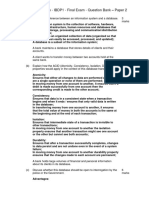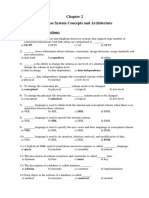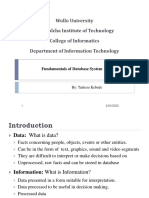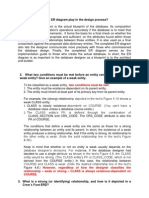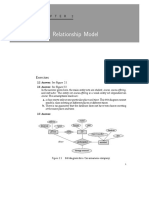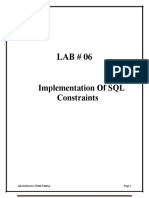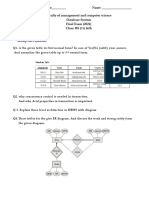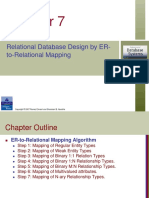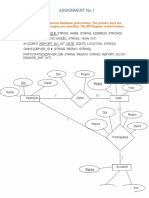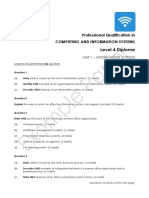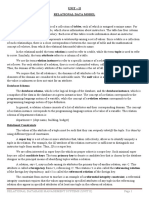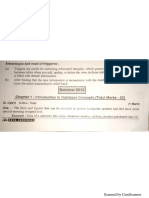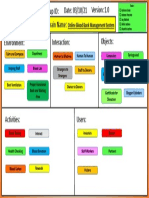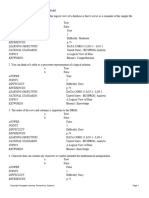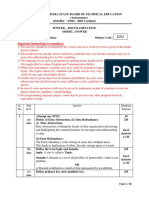0% found this document useful (0 votes)
579 views12 pages1.relational Model
1. The document defines key concepts in relational databases including candidate key, primary key, and foreign key. It also explains natural join, selection, and projection operations in relational algebra.
2. The questions provide examples of relational algebra expressions to represent queries involving operations like selection, projection, natural join on relations like Branch, Account, and Depositor.
3. The document discusses different types of joins like natural join, left outer join, right outer join, and full outer join. It provides an example of natural join between relations borrower and loan.
Uploaded by
BHAVESHCopyright
© © All Rights Reserved
We take content rights seriously. If you suspect this is your content, claim it here.
Available Formats
Download as PDF, TXT or read online on Scribd
0% found this document useful (0 votes)
579 views12 pages1.relational Model
1. The document defines key concepts in relational databases including candidate key, primary key, and foreign key. It also explains natural join, selection, and projection operations in relational algebra.
2. The questions provide examples of relational algebra expressions to represent queries involving operations like selection, projection, natural join on relations like Branch, Account, and Depositor.
3. The document discusses different types of joins like natural join, left outer join, right outer join, and full outer join. It provides an example of natural join between relations borrower and loan.
Uploaded by
BHAVESHCopyright
© © All Rights Reserved
We take content rights seriously. If you suspect this is your content, claim it here.
Available Formats
Download as PDF, TXT or read online on Scribd
/ 12


